Discover the diverse world of yarn bobbins as we unravel the various types, uses, and benefits in this informative blog post.
Are you tired of tangled yarns and messy crafting projects? If so, you might want to consider using yarn bobbins. Yarn bobbins are small, lightweight tools that can make your crocheting or knitting experience much smoother and more organized.
But with so many types of yarn bobbins available on the market, it can be overwhelming to choose the right one for your project. In this blog post, we’ll take a closer look at some popular types of yarn bobbins and help you decide which one is best for you.
So grab a cup of tea and let’s dive in!
Types of Materials Used in Bobbins
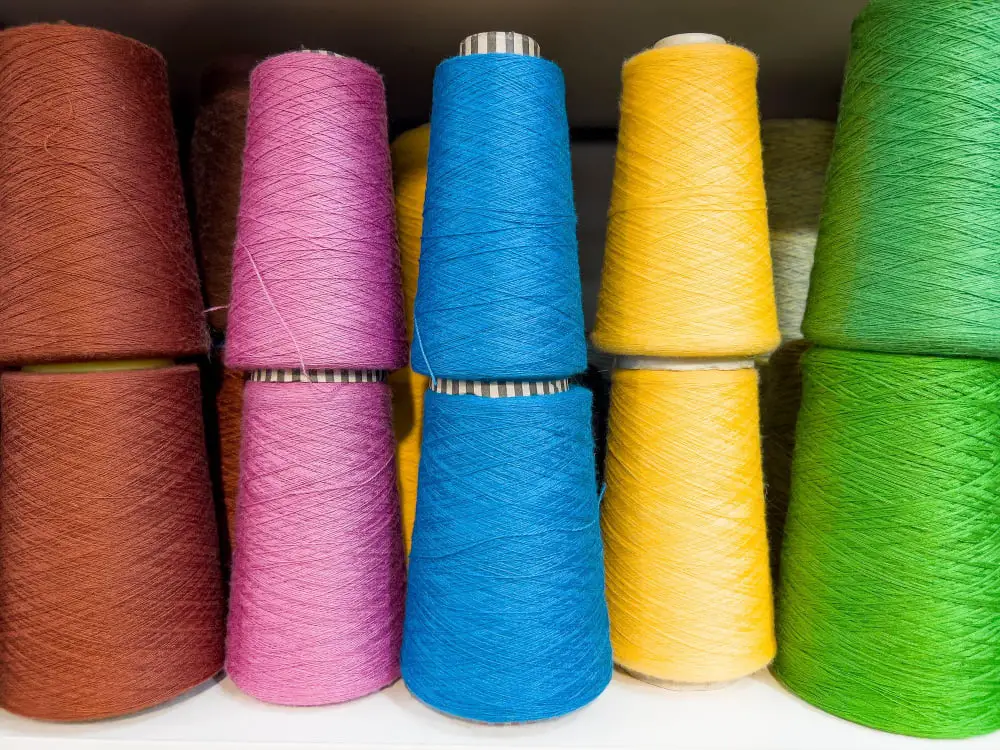
Some of the most common materials used for making yarn bobbins include wood, plastic, metal, and ceramic.
Wooden bobbins are popular among crafters who prefer traditional tools. They come in various shapes and sizes and are often handcrafted from hardwoods like maple or cherry.
Wooden bobbins have a smooth surface that prevents snagging on delicate fibers.
Plastic is another popular choice for making yarn bobbins because they’re lightweight yet sturdy enough to withstand frequent use. Plastic bobbin designs range from simple spools to more complex shapes with notches or hooks that help keep your thread organized while you work.
Metallic options such as aluminum or steel offer excellent durability but may be heavier than other materials which could cause fatigue during extended crafting sessions. Ceramic types provide an elegant look with intricate designs etched into them; however, they tend to be fragile compared to other options.
Choosing the right material depends on personal preference as well as project requirements such as weight-bearing capacity or compatibility with specific fibers.
Wood Bobbins
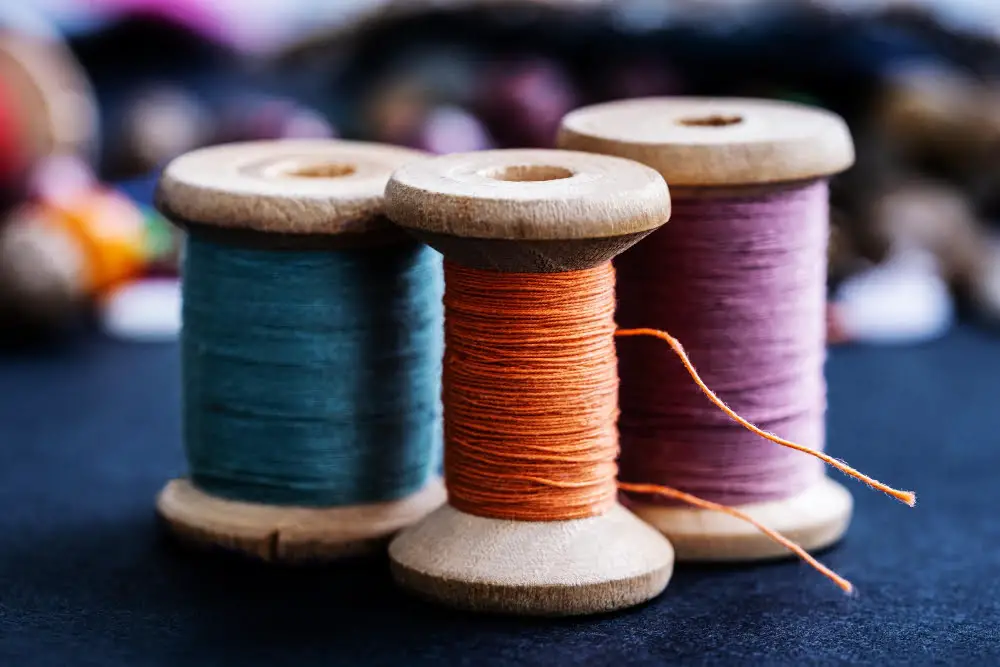
They come in various sizes, shapes, and finishes that can complement any yarn project. Wooden bobbins are often made from hardwoods such as maple, cherry, or birch wood.
These materials make them sturdy enough to withstand the tension of winding yarn without breaking.
One advantage of using wooden bobbins is that they do not create static electricity like plastic ones do. This means that your yarn will not cling to the bobbin while you’re working on your project.
Another benefit is their eco-friendliness compared to plastic options since they are biodegradable and renewable resources.
Wooden bobbins also have a vintage appeal for those who love traditional crafts or want an authentic look for historical reenactments costumes.
Plastic Types
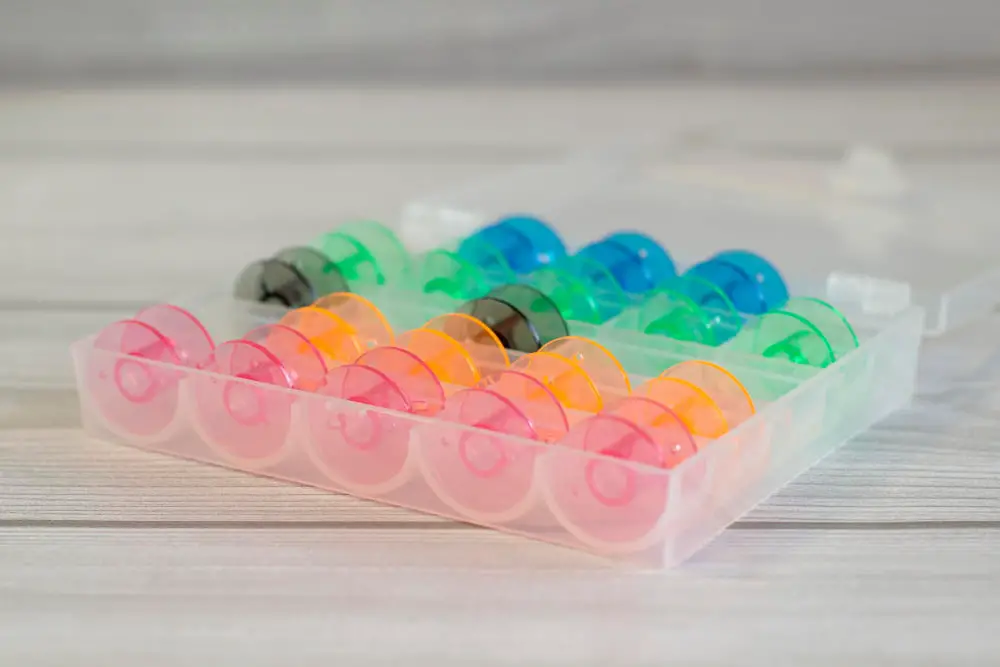
These bobbins are made from various types of plastic materials such as PVC, polycarbonate, or polypropylene. They come in different shapes and sizes but are generally smaller than wooden or metal ones.
One advantage of using plastic yarn bobbins is that they can easily fit into your project bag without adding extra weight. They also come in many colors which makes it easy to organize your yarn by color-coding them.
However, one downside of using plastic bobbin is that they may not be as durable as other materials like wood or metal. Over time they may crack or break if not handled with care.
Metal Varieties
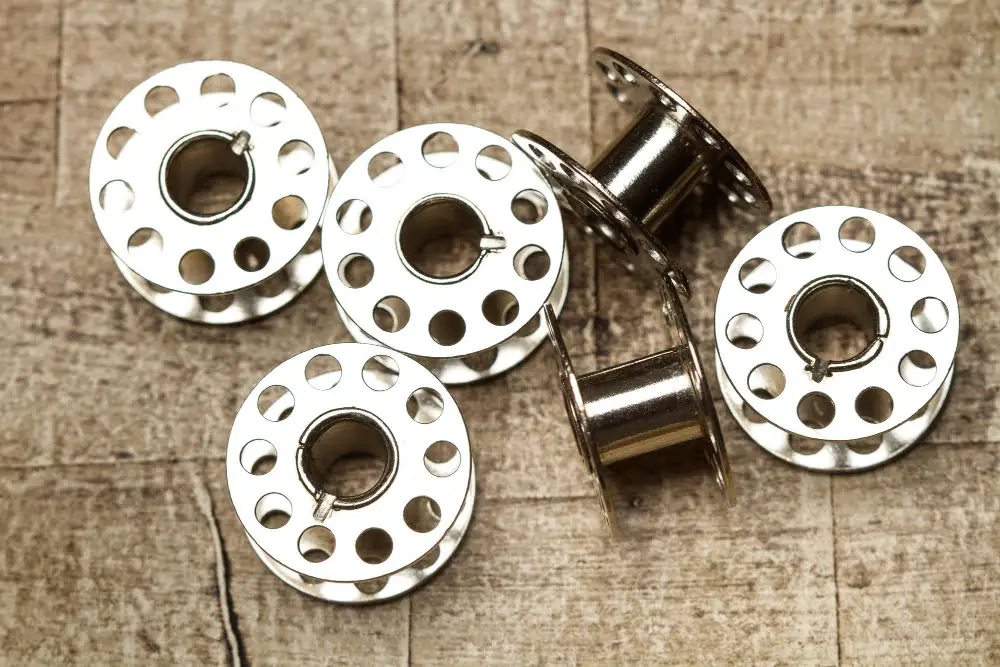
They come in different shapes, sizes, and finishes that cater to various preferences. Some metal bobbins have smooth surfaces that prevent snagging or tangling of the yarn while others have textured surfaces for better grip.
One type of metal bobbin is made from aluminum which is lightweight yet strong enough to hold up against tension when winding or weaving. Aluminum bobbins also tend to be less expensive than other metals making them an affordable option for beginners.
Another popular metal variety is stainless steel which has a sleek appearance and resists rusting over time. Stainless steel bobbins are ideal for those who want long-lasting tools that can withstand frequent use without showing signs of wear and tear.
Brass, copper, nickel-plated brass are other types of metals used in making yarn bobbins with each having its unique properties such as being corrosion-resistant or having antimicrobial qualities.
When choosing a metal bobbin consider the weight you prefer as some may feel too heavy during extended crafting sessions while others may be too light causing them not to stay put on your work surface.
Ceramic Options
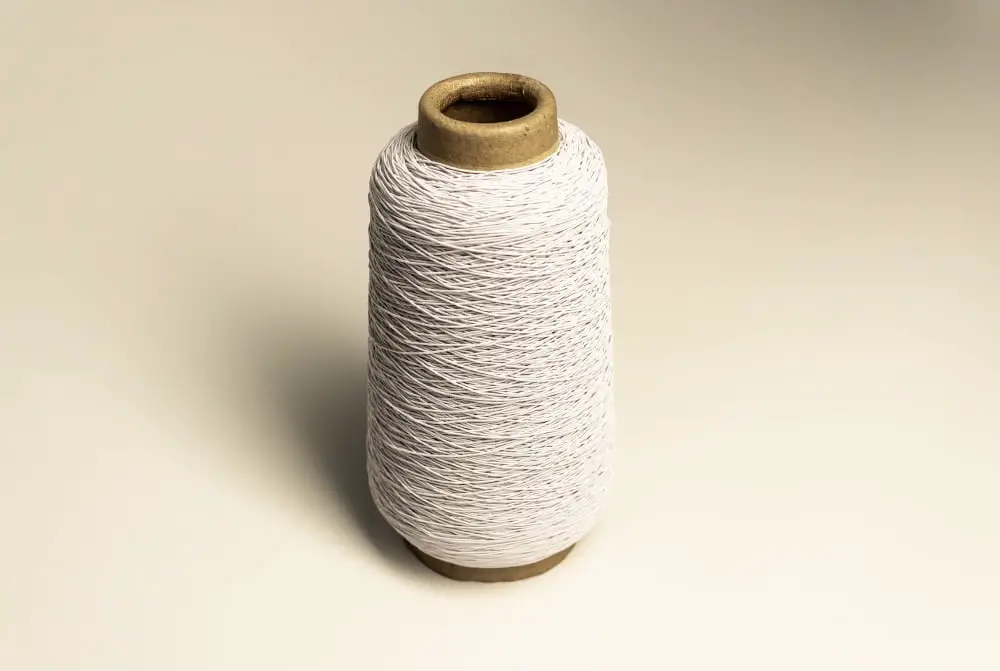
Ceramic bobbins are made from high-quality materials that can withstand wear and tear over time. They come in various shapes, sizes, and colors to suit your preferences.
One of the benefits of using ceramic yarn bobbins is their weight. They are heavier than plastic or wooden options which means they won’t move around as much while you work on your project.
Another advantage is that they don’t have any sharp edges or rough surfaces that could snag your yarn fibers. This makes them ideal for delicate projects like lacework or intricate patterns where every stitch counts.
Ceramic options also offer an aesthetic appeal with their unique designs and patterns making them a great addition to any crafter’s collection.
When choosing a ceramic bobbin, make sure it has enough space to hold the amount of yarn needed for your project without being too bulky or heavy to handle comfortably during use.
Bobbins for Specific Purposes

For example, spinning bobbins are typically larger and sturdier than knitting or weaving bobbins because they need to hold more yarn and withstand the tension of the spinning wheel. Weaving bobbins come in different shapes and sizes depending on the type of loom being used – boat shuttles have a pointed end that helps them glide through warp threads while end-feed shuttles have a mechanism that feeds weft yarn automatically.
Knitting bobbin sets usually include multiple small-sized plastic or wooden spools with hooks at one end to keep stitches from slipping off. These types of bobbin sets make it easier to knit complex patterns with multiple colors without tangling your working thread.
For winding skein into balls, nostepinne is an excellent choice as it allows you to wind up your skein quickly by hand without any additional tools required.
Choosing the right type of yarn bobbin depends on what kind of project you’re working on.
Spinning Bobbins
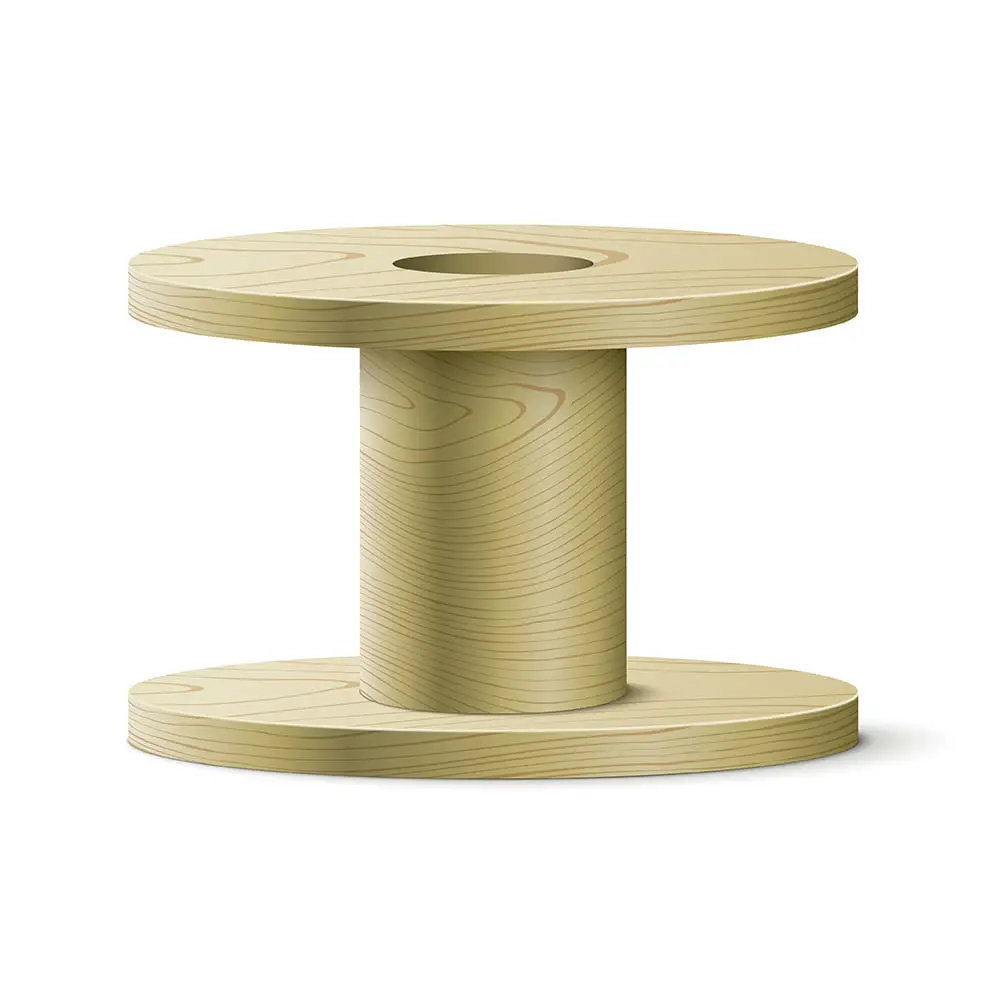
These bobbins come in various sizes and materials, including wood, plastic, and metal. They are designed to hold the spun fiber as it is created on the spinning wheel.
One of the most important factors when choosing a spinning bobbin is its weight capacity. The weight capacity determines how much yarn can be spun before needing to change out bobbins or transfer the yarn onto another spindle.
Another consideration when selecting a spinning bobbin is its compatibility with your specific type of spinning wheel. Some wheels require specific types of bobbins that fit into their unique mechanisms.
When using multiple colors or fibers in one project, having several different colored bobbins can help keep track of which fiber was used where and make plying easier later on.
Weaving Types

There are different types of weaving, and each one has its own unique set of requirements when it comes to choosing the right type of bobbin.
For tapestry weaving, for example, you’ll need bobbins that can hold a lot of yarn without being too heavy or bulky. Plastic or wooden bobbins with flat ends work well for this purpose.
Inkle weaving requires smaller and lighter-weight bobbins since they’re used in pairs on either side of the loom. Bobbins made from plastic or metal are ideal because they won’t add too much weight to your project.
Rigid heddle looms require long and narrow stick shuttles instead of traditional round-shaped ones. These shuttles have notches at both ends where you can wind your weft thread around them securely while working on your project.
Knitting Options
Knitting bobbins come in various shapes and sizes, but they all serve the same purpose: to keep your yarn organized and tangle-free while working on multiple colors or strands.
One popular type of knitting bobbin is the “jumbo” bobbin. These large-sized bobbins can hold more yarn than regular-sized ones, making them ideal for larger projects like blankets or sweaters.
They also have a flat base that allows them to stand upright on their own, which makes it easier to work with multiple colors at once.
Another option is the “locking” bobbin. These bobbins have a unique locking mechanism that keeps your yarn securely in place while you knit.
This feature prevents any accidental unraveling or tangling of your project’s threads.
Some knitters prefer using traditional wooden spools as their go-to tool when working with multiple strands of different colored threads simultaneously.
For Winding Yarn
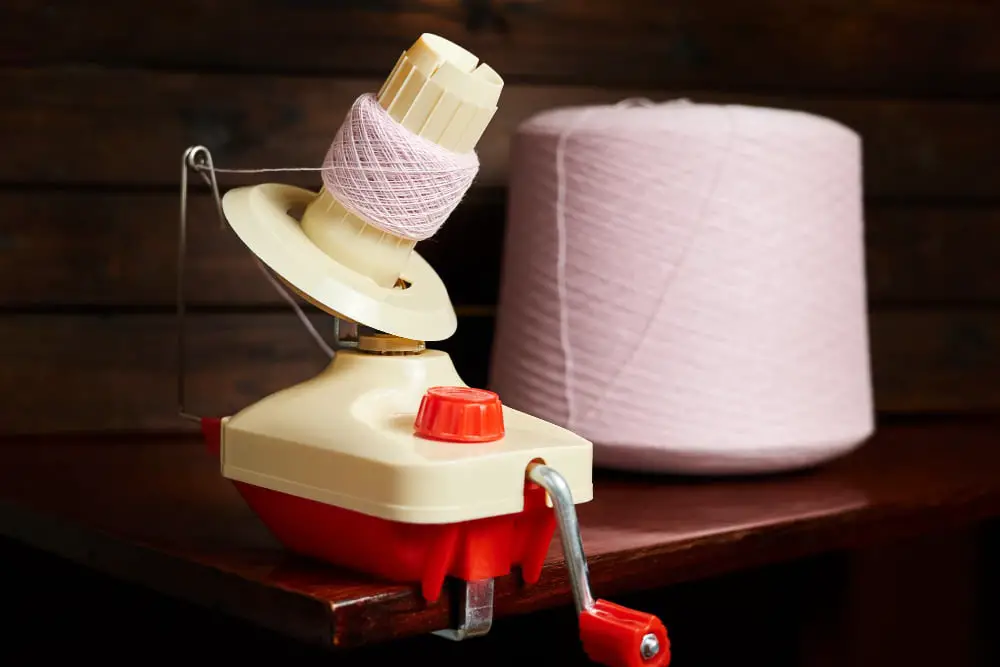
One of the best ways to do this is by using bobbins specifically designed for winding yarn. These bobbins come in different shapes and sizes, but they all serve the same purpose: keeping your skein or ball of yarn neat and tidy.
Some popular types of winding bobbins include cone-shaped plastic ones that can hold large amounts of thread, wooden spools with notches on either end for securing loose ends, or even handheld winders that make quick work out of turning hanks into center-pull balls.
When choosing a bobbin for winding purposes, consider factors such as the size and weight capacity needed based on your project requirements. You may also want to think about whether you prefer manual or electric winders depending on how much time you have available.
Storage-Related Bobbins

These bobbins come in various shapes, sizes, and materials that cater to different storage needs. Some of the most popular types include plastic bobbin boxes with compartments that can hold multiple bobbins at once, wooden bobbin racks that can be mounted on walls or placed on tables for easy access, and portable fabric cases with individual slots designed specifically for each type of bobbin.
When choosing a storage-related bobbin option, consider your crafting space’s size and layout as well as the number of yarns you typically work with simultaneously. If you have limited space or prefer a more compact solution, plastic boxes may be ideal since they take up less room than other options while still providing ample storage capacity.
On the other hand, if you have plenty of wall space available in your craft room or studio area but need quick access to your yarns while working on projects simultaneously – then wooden racks might suit better because they allow easy visibility without taking up valuable table surface area.
History of Yarn Bobbins
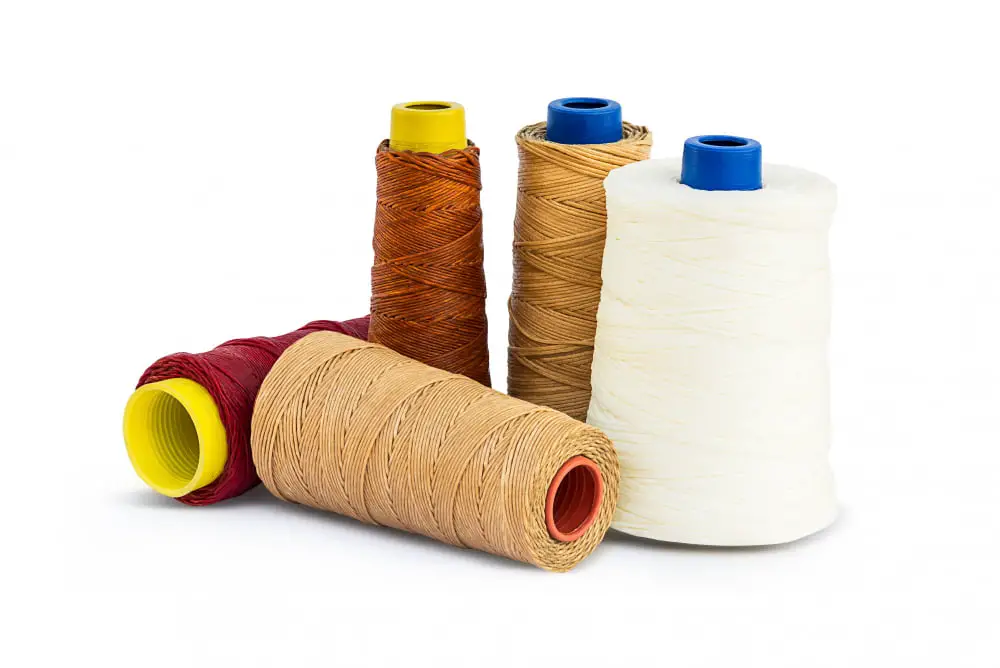
In ancient times, people used simple tools made from natural materials like wood or bone to wind and store their yarns. As technology advanced, so did the design and functionality of these tools.
During the Industrial Revolution in Europe, spinning machines were invented that could produce large quantities of thread quickly. This led to an increased demand for efficient ways to manage all this thread during weaving and knitting processes.
In response, manufacturers began producing specialized bobbins made from various materials such as metal or plastic that could be easily loaded onto a machine’s spindle for continuous use without tangling or breaking threads.
Today there are many different types of yarn bobbins available on the market with varying designs suited for specific purposes such as spinning wool into fine fibers or winding up skeins after dyeing them by hand.
Vintage Bobbins
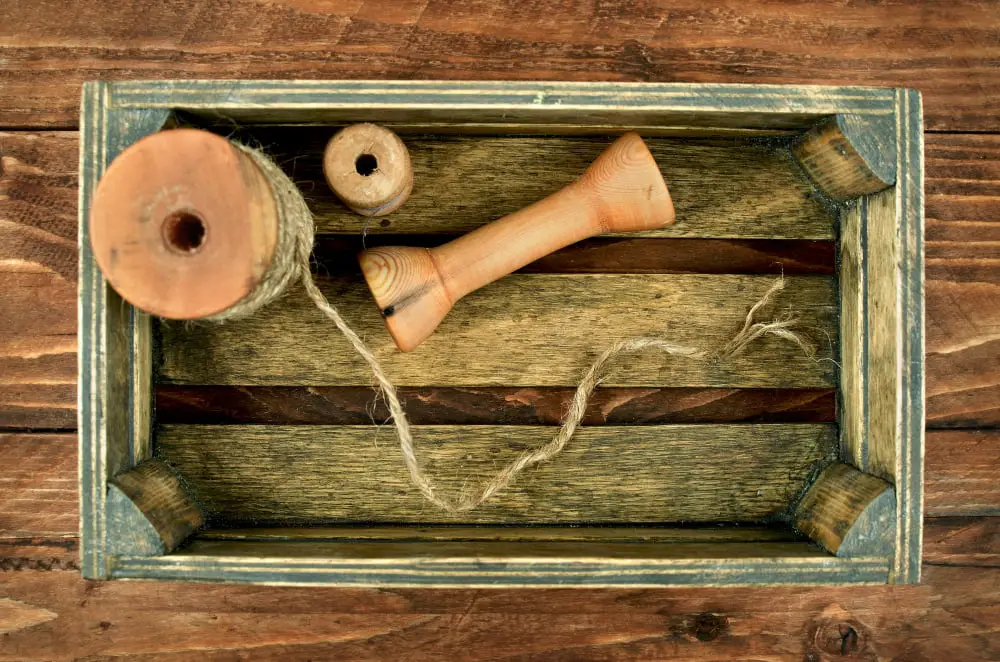
These bobbins were made in the past and have unique designs that reflect the era they were created in. Some vintage yarn bobbins are made from wood, while others may be crafted from metal or ceramic materials.
One popular type of vintage bobbin is the antique wooden spool. These spools come in various shapes and sizes, with some featuring intricate carvings or engravings on their surface.
They can be used for both decorative purposes as well as practical ones.
Another sought-after type of vintage bobbin is the glass one which was commonly used during Victorian times for silk thread embroidery work due to its smoothness that prevented snagging delicate threads.
If you’re lucky enough to find a set of these rare gems at your local thrift store or online marketplace, consider yourself fortunate! Vintage yarn bobbins not only make great additions to your collection but also serve as conversation starters when displayed on shelves or incorporated into craft projects such as wall hangings and mobiles.
Contemporary Designs
These bobbins come in a variety of shapes, sizes, and colors to suit your personal preferences. Some popular options include geometric patterns, floral prints or even animal-shaped bobbins.
One of the most significant advantages of contemporary designs is their versatility. They can be used for various crafts such as knitting or crocheting projects but also serve as decorative pieces on shelves or tables.
Moreover, many designers are now creating eco-friendly yarn bobbins using recycled materials like plastic bottles and cardboard tubes to reduce waste while still producing beautiful products.
Global Yarn Bobbins
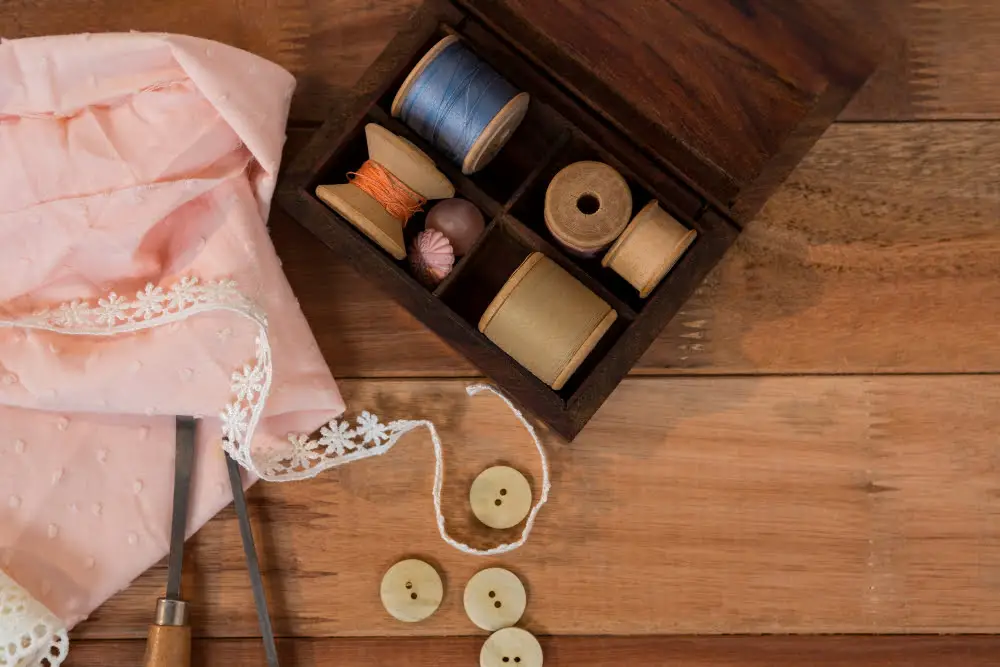
From India’s charkha bobbins to Russia’s Vistula bobbins, each country has its own history and tradition when it comes to these handy tools.
In India, the charkha is a traditional spinning wheel that dates back thousands of years. The charkha bobbin is typically made from wood or bamboo and features a long shaft with a tapered end for winding yarn.
These simple yet effective tools are still used today by artisans who practice traditional spinning techniques.
The Vistula bobbin from Russia is another example of cultural diversity in yarn crafting tools. Made from birch wood or other hardwoods, these bobbins feature intricate carvings on their surface that reflect Russian folk art traditions.
Japan also has its own unique style of bobbin called the nostepinne which translates as “nest stick”. This tool resembles an elongated spindle with one pointed end for holding onto while winding your ball or skein into neat center-pull balls without any tangles.
Charkha Bobbins From India
They were traditionally used with the charkha spinning wheel, which is still commonly used in rural areas of India today. Charkha bobbins are typically made from wood and have a unique shape that allows them to be easily held between the fingers while spinning.
These bobbins come in various sizes and shapes, depending on their intended use. Some are designed for fine thread work, while others can handle thicker fibers like wool or cotton.
One interesting feature of charkha bobbins is their ability to spin both clockwise and counterclockwise without any adjustments needed. This makes them ideal for creating intricate designs or patterns with ease.
While traditional charkhas may not be as common as they once were due to modern technology advancements, these beautiful wooden tools remain an important part of Indian culture and history.
Vistula Bobbins of Russia
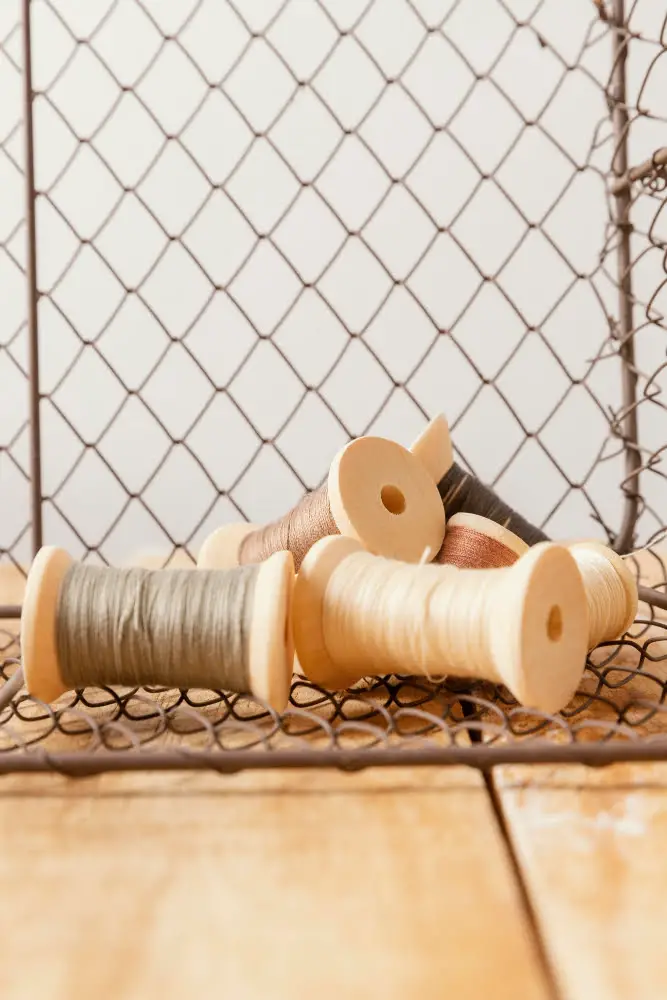
It is named after the Vistula River, which flows through Poland and into Russia. The bobbins are made from birch wood and have a unique shape that allows them to be easily held between the fingers while working on intricate lace patterns.
These bobbins are highly prized by lacemakers around the world due to their smooth surface, lightweight construction, and comfortable grip. They come in various sizes depending on the type of thread being used.
Japanese Nostepinne
It’s a simple, yet effective design that has been around for centuries. The nostepinne is made of wood and features a tapered shape with notches at one end to hold the yarn in place as you wind it around the shaft.
The Japanese Nostepinne comes in various sizes and shapes, each designed to accommodate different types of yarns. Some are small enough to fit in your pocket while others are larger and require two hands to use.
One unique feature of the Japanese Nostepinne is its ability to create beautiful patterns on your finished project by changing colors or textures as you wind the ball. This makes it an excellent choice for those who love experimenting with different color combinations or want their projects to have an extra touch of creativity.
Environmental Impact of Bobbins
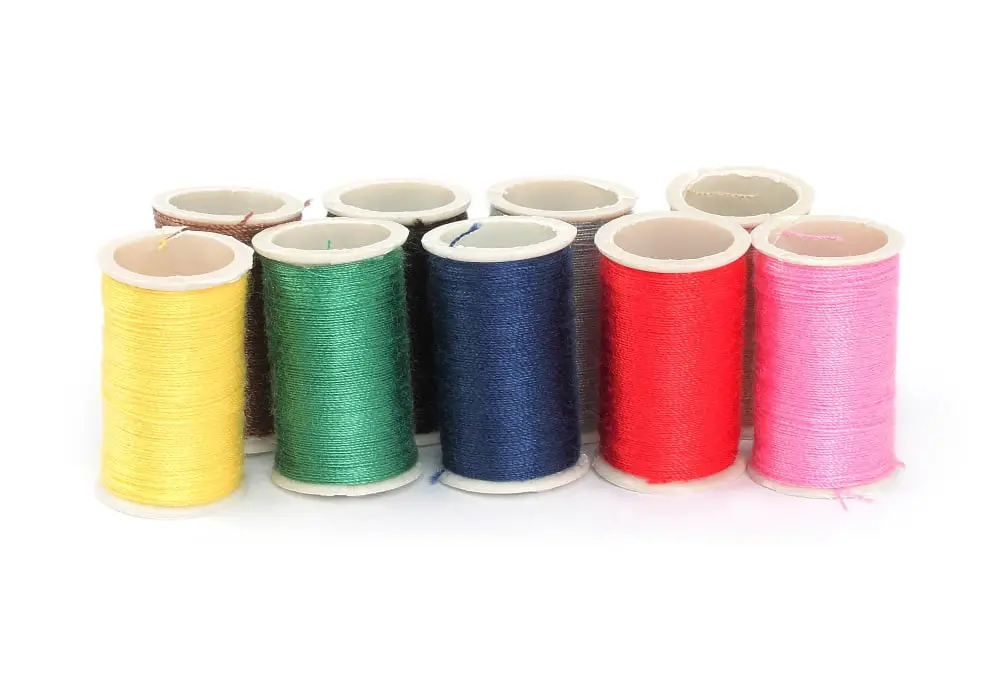
Yarn bobbins are no exception. While they may seem like small and insignificant items, their production and disposal can have a significant impact on the environment.
Plastic yarn bobbins are commonly used due to their affordability and durability. However, plastic is not biodegradable and can take hundreds of years to decompose in landfills or oceans.
This means that discarded plastic bobbins contribute significantly to pollution.
On the other hand, wooden yarn bobbins are a more eco-friendly option as they come from renewable resources such as trees. They also have a lower carbon footprint compared to plastic or metal options since wood requires less energy during production.
If you’re looking for even more sustainable alternatives for your yarn bobbin needs, there are now companies producing eco-friendly options made from recycled materials such as cardboard or bamboo fiber.
Eco-friendly Choices

Fortunately, there are many sustainable alternatives available that can help reduce waste and minimize our carbon footprint.
One option is to use recycled plastic bobbins made from post-consumer materials. These bobbins are durable and long-lasting while also being environmentally friendly.
Another eco-friendly choice is wooden or bamboo bobbins which come from renewable resources. They have a natural look and feel that adds an organic touch to your crafting projects.
You can also opt for handmade ceramic or clay bobbin designs created by local artisans who prioritize sustainability in their work processes.
Sustainable Alternatives

Luckily, there are many eco-friendly options available for yarn bobbins. One popular choice is bamboo bobbins which are biodegradable and renewable since bamboo grows quickly and doesn’t require pesticides or fertilizers.
Another option is recycled plastic bobbins made from post-consumer waste materials such as milk jugs or soda bottles. These types of bobbin help reduce landfill waste while still providing a durable tool for your crafting needs.
If you’re looking for something even more unique, you can try making your own yarn bobbin using upcycled materials like cardboard tubes from toilet paper rolls or old credit cards cut into strips.
How to Choose a Bobbin

First and foremost, you’ll want to think about the type of project you’re working on. Different bobbins work better for different types of crafts – for example, if you’re weaving a large tapestry, you might need a sturdier bobbin than if you were knitting socks.
Another important consideration is the material that your bobbin is made from. Wood bobbins are popular among many crafters because they’re lightweight and easy to handle; plastic bobbins can be more affordable but may not last as long; metal or ceramic options can be more durable but also heavier.
You’ll also want to think about how much yarn your chosen bobbin can hold – some smaller designs may only hold enough yarn for small projects while larger ones will have plenty of space for bigger endeavors.
Ultimately, choosing the right yarn bobbin comes down to personal preference and what works best with your crafting style.
Proper Care for Bobbins
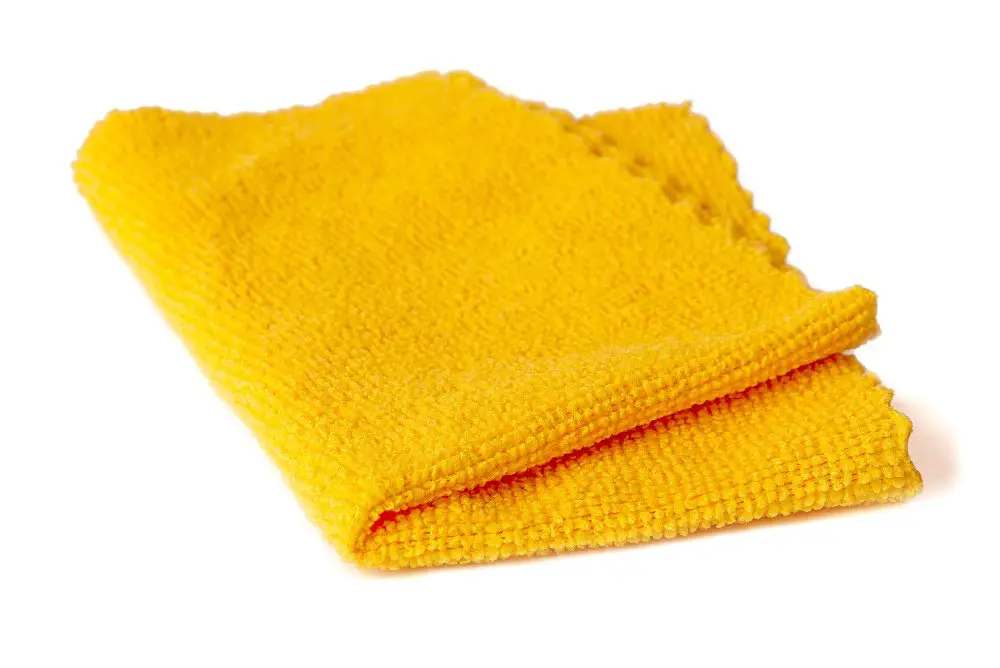
Proper maintenance can help extend the life of your bobbins and ensure they remain in excellent condition.
One essential tip is to keep them clean. Dust and debris can accumulate on bobbins over time, which may affect their performance or even damage them.
To avoid this, wipe down your bobbins regularly with a soft cloth or brush.
Another crucial aspect is storage. Storing your yarn bobbins correctly will prevent tangling and other issues that could ruin them quickly.
You might want to consider using a dedicated container or organizer designed specifically for storing these tools.
Lastly, be mindful of how you handle your yarn bobbin during use as well as when not in use; rough handling could cause breakage or deformation over time.
Solutions for Storing Bobbins
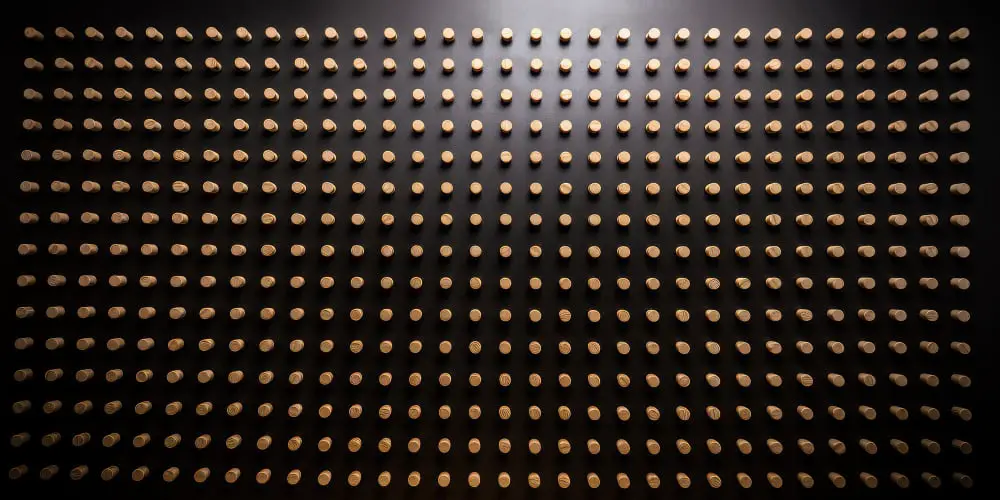
Storing your bobbins correctly can help keep them organized and prevent tangling or damage. Here are some solutions for storing your yarn bobbins:
- Bobbin Boxes: These boxes come in various sizes and shapes, with compartments to hold each bobbin securely.
- Bobbin Trees: A bobbin tree is a stand designed to hold multiple bobbins at once, making it easy to access the one you need.
- Magnetic Strips: You can attach magnetic strips on walls or inside drawers and place metal-based yarn bobbins on them for easy access.
- Pegboards: Pegboards offer ample space for hanging different types of tools including hooks, needles as well as small items like scissors and tape measures along with the yarns themselves.
- Drawer Dividers – If drawer space is what’s available then using dividers will allow keeping all kinds of crafting supplies together while still being able to see everything at once without having things get mixed up.
No matter which solution works best for you; make sure that it keeps your precious stash safe from dust or moisture so they remain in good condition until their next use!
FAQ
What can I use as yarn bobbins?
As yarn bobbins, you can use items like pegs or small pieces of card, which help manage the yarn in projects with multiple color changes, such as graphgan designs.
What is bobbin yarn?
Answer: Bobbin yarn refers to small skeins of yarn used for projects with multiple color changes.
What are the different materials used to make yarn bobbins?
Different materials used to make yarn bobbins include wood, plastic, and metal.
How do I choose the right yarn bobbin for my project?
To choose the right yarn bobbin for your project, consider the yarn type, project size, and personal preferences in terms of material and functionality.
What are the benefits of using yarn bobbins while knitting or crocheting?
Yarn bobbins help to manage multiple colors, prevent tangles, and maintain tension while knitting or crocheting.
